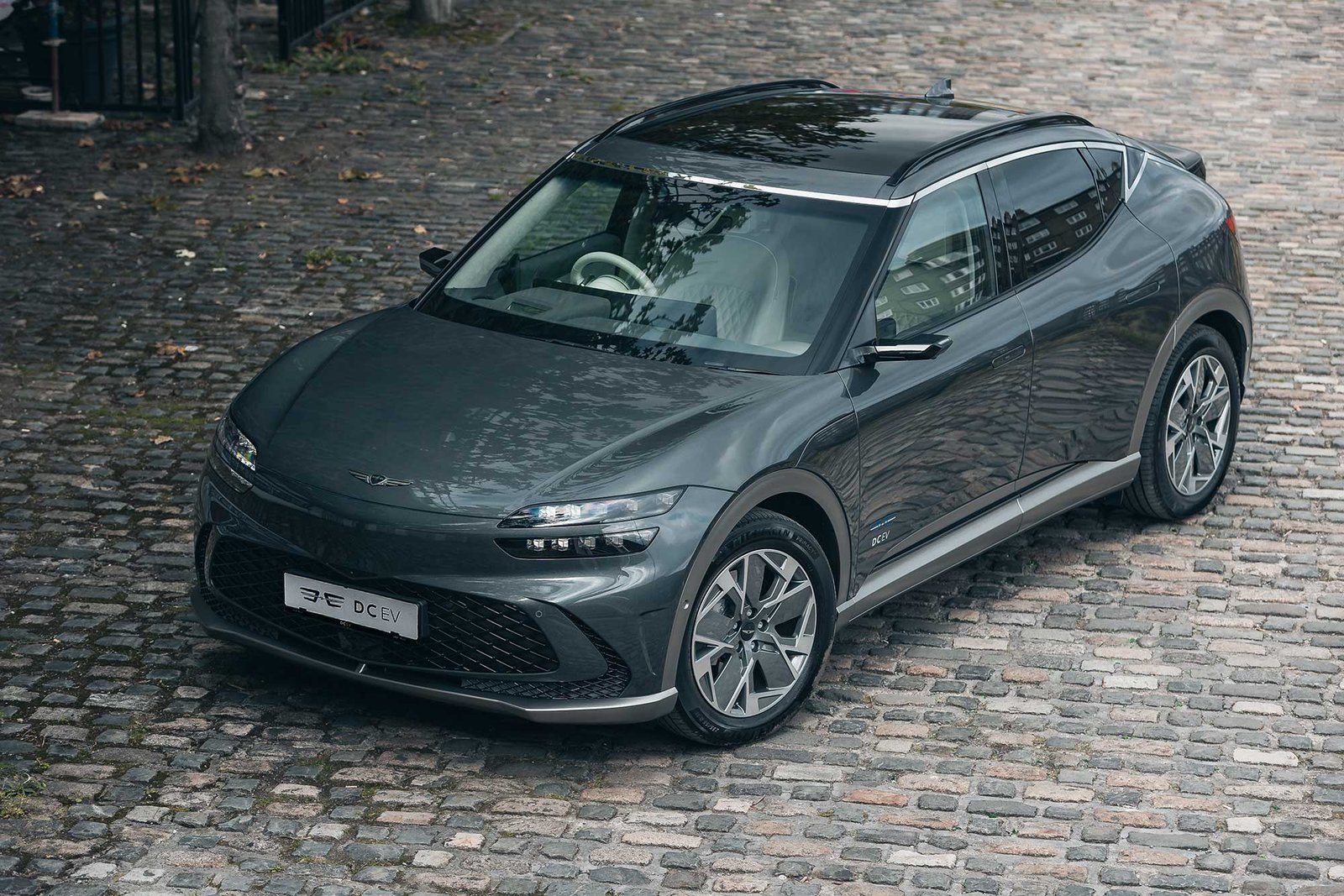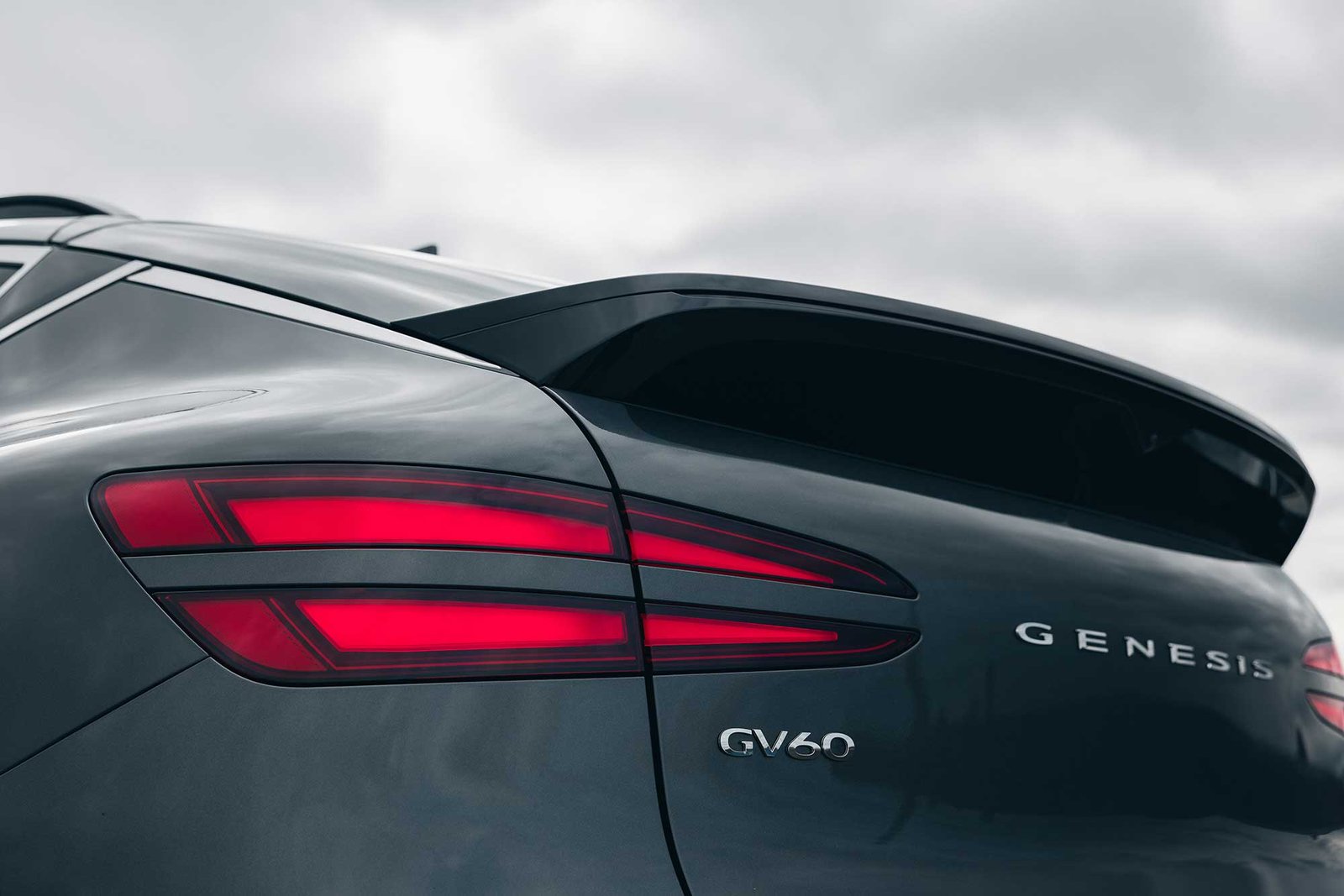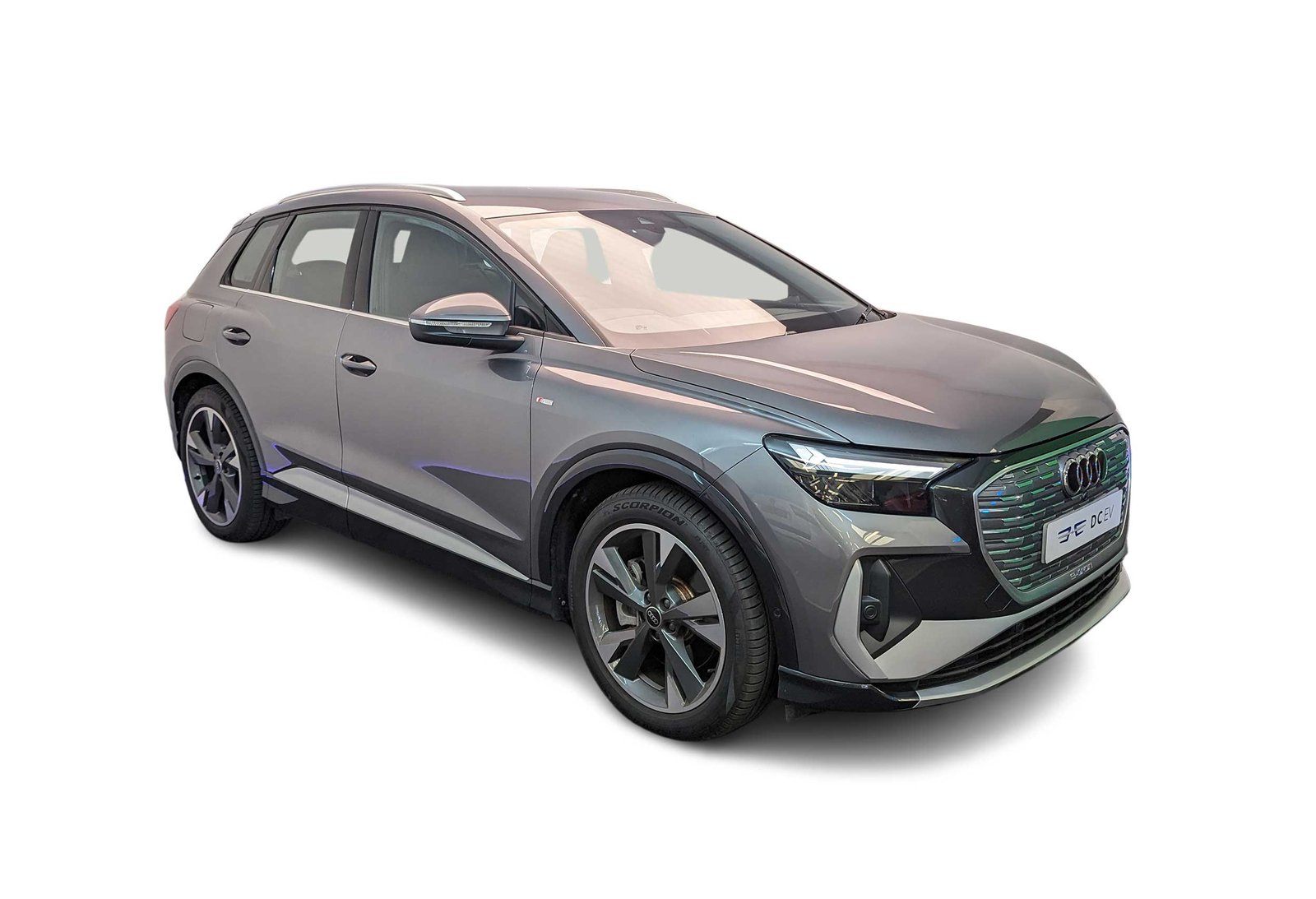Smart tech and a premium interior make the Genesis GV60 a winner.
Good points
- Premium feel interior
- Equipment levels
- Range and driving experience
Bad points
- Not as established as other brands
- Modest performance
- Handling could be sharper
Genesis GV60 Introduction
You might not have heard much about the Genesis brand so far, but that is changing as the premium Korean brand — part of the Hyundai and Kia family — expands its model portfolio in Europe and leading that is the GV60. This five-seat SUV uses the same platform as the excellent Kia EV6 and striking Hyundai Ioniq 5 but wraps itself up in a very different-looking shape.

Design and Specs
Look at the Genesis GV60 in isolation, and you might think it’s just another cute compact crossover, but in person, you’ll discover there’s not a lot that’s small about this enticing Korean car. At 4.5 metres in length, it’s a sizeable thing that hides its mass well.
A distinctive front-end design features split headlights and a subtly pointed nose. The lower bumper section houses a broad intake with a large mesh design and a metallic splitter across its base. Underneath the bonnet is a 53-litre storage compartment or ‘frunk’; although the dual-motor versions see this space reduce to 20 litres, it’s still enough room for carrying charging cables. The contrasting wheel arch trim extends into the sill running along the car’s cleanly designed sides. Similar to its Kia and Hyundai relations, the door handles sit flush against the bodywork when locked, popping open when you approach the car.
Further helping to make the car more aerodynamic, and therefore go further on a single charge, are the optional digital door mirrors. Instead of conventional door mirrors, this camera-based system provides a greater field of view. It replays that image onto colour displays mounted on the car’s interior close to where you would usually look in the direction of door mirrors. The system works well and provides a clear view at night, but it takes some time and might not appeal to everybody.
The car’s back slopes down for a sportier look, though accessibility for the rear passenger isn’t compromised. Similar to the Hyundai Ioniq 5, there is no rear wiper – the airflow from the roof helps to keep the rear window clear, and the presence of a lip spoiler on the tailgate prevents more dirt from being thrown up by the rear wheels. The rear lights mirror the headlights with a split design that wraps around the car’s rear corners. Boot space is a decent 432 litres, and the opening is a good size making it easy to load bulkier items.

Battery and Range
The GV60 gets a large 77.4kWh battery, matching what is also used in the Hyundai Ioniq 5 and Kia EV6. According to official figures that give the Genesis a driving range of 517 kilometres and an energy consumption figure of 17kWh/100km. One of the headline figures of the GV60 is its ability to handle seriously rapid charging rates. Genesis states that the maximum DC charging rate is 350kW, significantly faster than most of its rivals. Such charging rates mean it could recharge the battery from 10 to 80 per cent in just 18 minutes. That’s the equivalent of adding 201 kilometres of range every ten minutes. However, it’s also worth noting that charging stations with that capacity remain few and far between.
Interior Space
The beguiling size of the GV60 means there is surprising room inside the cabin in both the front and rear seats. With higher-spec versions, the driver’s seat offers an excellent level of electric adjustment and includes a massage function which can come in handy during longer journeys. The lighter colour upholstery does look very premium though it is perhaps not the most practical choice on a day-to-day basis.
A dual-screen instrument panel presents all the relevant information in front of the driver, and the central touchscreen display provides a detailed infotainment system. The usual smartphone mirroring is also available, and a wireless charging pad within the floating centre console section means you can leave those phone cables at home. That centre console also carries a nifty fingerprint reader that owners can use to set the car up for different profiles if more than one person uses it.
There is a fair amount of headroom and legroom for those in the rear seats, with just enough room to extend your feet under the front seats. The rear seatbacks can also recline to make the seating position a little more relaxed. Three can fit across the back seats, but the main comfort focus is on two people in the outer seats, which also contain ISOFIX mounting points. Another helpful feature is that the front passenger seat has controls on the side that enables someone in the rear to electrically move it forward and tilt to create more space so long as nobody is already seated in the front.

Drive
With a 229hp electric motor driving the rear axle and 350Nm of instant torque on demand, the Genesis GV60 is a reasonably brisk car. It can accelerate from 0-100km/h in 7.8 seconds, and while that won’t worry anyone with a Tesla Model S Plaid, it does move the upmarket Korean crossover along at a decent pace. The more powerful dual-motor version will complete the same sprint in four seconds, should you need it.
Where the GV60 shines is the setup of its chassis, with suspension that does a fine job of soaking up bumps and providing a generally smooth ride on less-than-perfect road surfaces. It’s quiet on the move, too, so long as you haven’t selected the Sport mode, which pipes a digitised sound into the cabin to enhance the car’s sporty nature. Comfort on the move is never in doubt, with the quilted upholstery doing more than simply looking good. Depending on the model you choose, both heated and ventilated front seats are available.
The steering could do with a bit more feedback to please more enthusiastic drivers, but in daily driving it is nicely weighted and makes the GV60 an easily manoeuvrable car. In urban settings you can get closer to that claimed driving range figure and the strength of the energy recovery when you lift off the accelerator means you won’t always need to go for the brake pedal.
Genesis GV60 Summary
The Genesis GV60 drives in a similar vein to its cousin, the Kia EV6, but wraps itself up in a far nicer interior that puts it squarely in the premium segment. It’s easily a match for other premium cars, such as the Mercedes-Benz EQA and the Volvo C40. For the time being, it enjoys the added bonus of being a rarity in this market, further adding to its exclusivity. Some buyers will appreciate the onboard tech, while others will welcome the super-fast charging rates.







